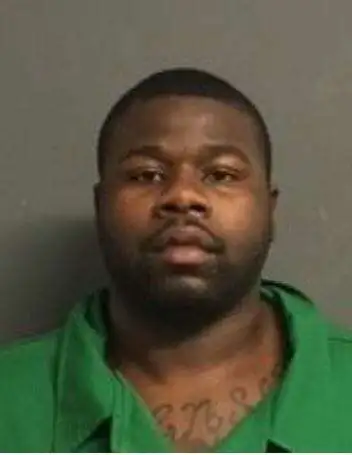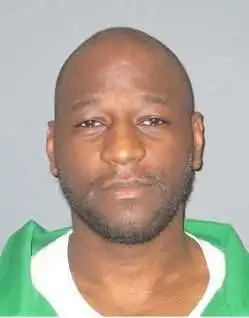Norman McKenzie Murders 2 In Florida
Norman McKenzie was sentenced to death by the State of Florida for a double murder
According to court documents Norman McKenzie would break into a home where he would murder 49-year-old Randy Peacock and 64-year-old Charles Johnston with a hatchet
Norman McKenzie would be arrested, convicted and sentenced to death
Norman McKenzie Photos

Norman McKenzie Now
DC Number: 648711
Name: MCKENZIE, NORMAN B
Race: WHITE
Sex: MALE
Birth Date: 07/08/1964
Initial Receipt Date: 11/27/1984
Current Facility: UNION C.I.
Current Custody: MAXIMUM
Current Release Date: DEATH SENTENCE
Norman McKenzie Case
The evidence presented at trial established that on October 5, 2006, two Flagler Hospital employees became concerned when Randy Peacock, a respiratory therapist at the hospital, did not report to work. The two employees drove to the home that Peacock shared with Charles Johnston. Upon their arrival, they noticed that Peacock’s vehicle, a green convertible, was not there. When the employees entered the residence, they found Peacock lying face down on the kitchen floor in a pool of blood. When deputies from the St. Johns County Sheriff’s Office (SJSO) arrived, they secured the scene and subsequently located the body of Charles Johnston in a shed that was also located on the property. While processing the crime scene, law enforcement officers located a hatchet inside the shed that appeared to have blood on its blade and handle. A butcher knife was found in the kitchen sink. Deputies observed a gold sport utility vehicle (SUV) in the driveway and determined that it was registered to Norman Blake McKenzie.
The deputies subsequently spoke with a neighbor of the victims. The neighbor stated that on October 4, 2006, he went to the victims’ home to assist Johnston with repairs on his vehicle. When the neighbor first arrived, Johnston was not there but Peacock was present and was speaking with a man whom the neighbor later identified in a photo lineup as McKenzie. The neighbor confirmed that he saw Peacock speaking with McKenzie between 4:30 and 7 p.m., and that he also observed a gold SUV in the driveway. The neighbor departed the victims’ residence before dark.
McKenzie subsequently had an encounter with a Citrus County sheriff’s deputy during which Randy Peacock’s wallet was recovered from one of McKenzie’s pockets. Further, Charles Johnston’s wallet was located in a vehicle that McKenzie had recently operated. McKenzie agreed to speak with SJSO deputies on two separate occasions during which he confessed to the murders of Peacock and Johnston.
Norman McKenzie explained that he went to the victims’ residence on October 4, 2006, to borrow money from Johnston because of his drug addiction. When he first arrived, only Peacock and the neighbor were present; however, Johnston returned home around dusk. The neighbor left after briefly speaking with Johnston, and at some point, Peacock went inside the residence. McKenzie then asked Johnston for a hammer and a piece of wood so that he could knock some “dings” out of the door of his SUV. Johnston could not locate a hammer and gave McKenzie a hatchet. While walking into the shed to locate a piece of wood, McKenzie struck Johnston in the head with the blade side of the hatchet. Johnston fell to the floor and McKenzie struck him again. McKenzie then entered the home, approached Peacock, who was cooking in the kitchen, and struck him with the hammer side of the hatchet approximately two times.
Norman McKenzie returned to the shed, and when he observed that Johnston was still alive, he struck Johnston one or more times with the hatchet. McKenzie removed Johnston’s wallet from his pocket, placed the hatchet on top of a bucket inside the shed, and re-entered the residence. McKenzie observed that Peacock was struggling to stand up, so he grabbed a knife and stabbed Peacock multiple times. McKenzie then placed the knife in the sink, took Peacock’s wallet and car keys, and departed in Peacock’s vehicle.
An autopsy conducted on Randy Peacock revealed that the cause of his death was six stab wounds which caused extensive bleeding, with a contributory cause of blunt-force trauma to the head. The stab wounds suffered by Peacock were consistent with the knife found in the kitchen sink and the blunt-force trauma was consistent with the hammer side of the hatchet that was recovered from the shed. An autopsy conducted on Charles Johnston revealed that the cause of his death was extensive head trauma due to the infliction of four “chop” wounds. The trauma to Johnston’s skull was consistent with the blade side of the hatchet that was recovered from the shed.
During a pretrial hearing, Norman McKenzie expressed frustration with his court-appointed counsel because his right to a speedy trial had been waived without first consulting with him. When defense counsel sought a continuance on the basis that more time was needed to prepare for trial, McKenzie objected. McKenzie insisted that he was ready and wanted to proceed as expeditiously as possible. As a result, defense counsel moved to withdraw. The trial court, based upon McKenzie’s assertion that he was ready to proceed, denied the motion and scheduled a trial date.
During a second pretrial hearing, defense counsel again moved for a continuance, asserting that additional time was necessary to prepare for trial and to investigate mitigation. McKenzie again expressed frustration with his court-appointed counsel, stating that they had requested his medical records even though he had specifically advised them that he did not want this action taken. When the trial court recommended that McKenzie listen to his attorneys’ assertion that more time was required to properly prepare for trial, Norman McKenzie responded that he did not need the assistance of counsel. Based upon this statement, the trial court scheduled a Faretta1 inquiry.
During the Faretta hearing, when asked by the trial court why he wanted to represent himself, Norman McKenzie replied that he was ready for trial and did not need attorneys to prepare any sort of mitigation on his behalf. McKenzie also expressed the belief that he possessed sufficient intelligence to represent himself. With regard to his desire to proceed to trial as quickly as possible, McKenzie stated that he did not wish to subject his mother, his fiancée, or the victims’ families to an extended trial, and that he thought a protracted trial would be a waste of taxpayer funds.
When the trial court asked McKenzie why he wanted to discharge his court-appointed counsel, Norman McKenzie replied that they insisted upon taking actions with which he disagreed. Defense counsel agreed that McKenzie’s displeasure with them arose from a difference of opinion with regard to trial strategy. After conducting a Faretta inquiry, the trial court concluded that McKenzie was competent to waive counsel and that his waiver was knowing, intelligent, and voluntary. The trial court allowed McKenzie to represent himself but appointed standby counsel with McKenzie’s approval.
During the guilt phase of the trial, Norman McKenzie admitted that he went to the victims’ home on October 4 with the intention of taking their money. McKenzie also admitted that he hit both Johnston and Peacock with the hatchet and stabbed Peacock with a knife. After the State rested its case, McKenzie stated that he would not offer any witness testimony and further declined to testify on his own behalf. On August 21, 2007, the jury found McKenzie guilty of two counts of first-degree murder.













